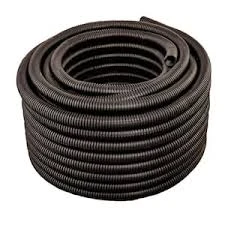Understanding the Basics of Synchronous Belts and Their Applications in Machinery
What Is a Synchronous Belt?
Synchronous belts, also known as timing belts, are essential components commonly found in various mechanical systems. They are primarily associated with the timing mechanisms of internal combustion engines but have applications in a wide range of machinery, including robotics, conveyor systems, and industrial equipment. Understanding what synchronous belts are, how they work, and their various applications can provide valuable insight into their importance in modern technology.
Structure and Design
A synchronous belt is characterized by its toothed or cogged design, which allows it to engage directly with corresponding teeth on pulleys. This configuration ensures a precise and synchronized movement between the belt and the pulleys it connects. Typically made from a combination of rubber and reinforced fibers, synchronous belts are designed to withstand high levels of stress and strain, making them durable and reliable for their intended applications.
The teeth on a synchronous belt fit into the grooves of the pulleys, reducing the risk of slippage as compared to standard V-belts that rely on friction to transmit power. This feature is crucial in applications where timing and precision are paramount, such as in the operation of an engine's camshaft and crankshaft.
How Synchronous Belts Work
The function of a synchronous belt is straightforward yet highly effective. When the motor drives one of the pulleys, the belt moves in tandem, transferring motion to the other pulley in a predetermined relationship. The key advantage of this mechanism is that it maintains the alignment between the components, ensuring that they move in sync without delays or discrepancies.
This synchronous motion is particularly important in engines, where precise timing of valve openings and closings can significantly influence performance, efficiency, and emissions. In machinery, synchronous belts can eliminate complications associated with power transmission, resulting in smoother operations and reduced wear over time.
Applications of Synchronous Belts
Synchronous belts have diverse applications across various industries
what is a synchronous belt

1. Automotive Industry One of the most recognized uses of synchronous belts is in automotive timing systems. These belts connect the crankshaft and camshaft, ensuring that the engine's valves open and close at the correct intervals. This synchronization is vital for optimal engine performance, fuel efficiency, and emissions control.
2. Industrial Machinery In manufacturing and industrial applications, synchronous belts are used to drive conveyor systems, packaging machines, and textile machinery. Their ability to maintain precise timing helps improve production efficiency and reduce the risk of operational errors.
3. Robotics The robotics industry relies heavily on synchronous belts for motion control. They provide accurate positioning for robotic arms and automated machinery, essential for tasks such as assembly, welding, and material handling.
4. HVAC Systems In heating, ventilation, and air conditioning systems, synchronous belts are used in blower motors and other components, contributing to efficient airflow and temperature regulation.
5. Fitness Equipment Synchronous belts are also employed in treadmills and other fitness machines. They facilitate smooth operation and consistent performance during workouts.
Advantages of Synchronous Belts
The advantages of using synchronous belts are numerous
- Precision They offer exact timing and positioning, making them ideal for applications requiring high accuracy. - Reduction of Slippage The tooth engagement prevents slippage, ensuring consistent power transmission. - Durability Made from robust materials, synchronous belts can withstand significant loads and operate effectively over long periods. - Low Maintenance With fewer moving parts and no need for lubrication, synchronous belt systems require less maintenance compared to other drive systems.
Conclusion
Synchronous belts play a crucial role in various mechanical systems, offering unmatched precision, durability, and reliability. Their unique design allows for effective power transmission without slippage, making them indispensable in automotive, industrial, and numerous other applications. As technology advances, the importance of synchronous belts will continue to grow, solidifying their place as vital components in our machines and engines. Understanding their function and benefits is essential for engineers, manufacturers, and anyone involved in industries that rely on sophisticated mechanical systems.








